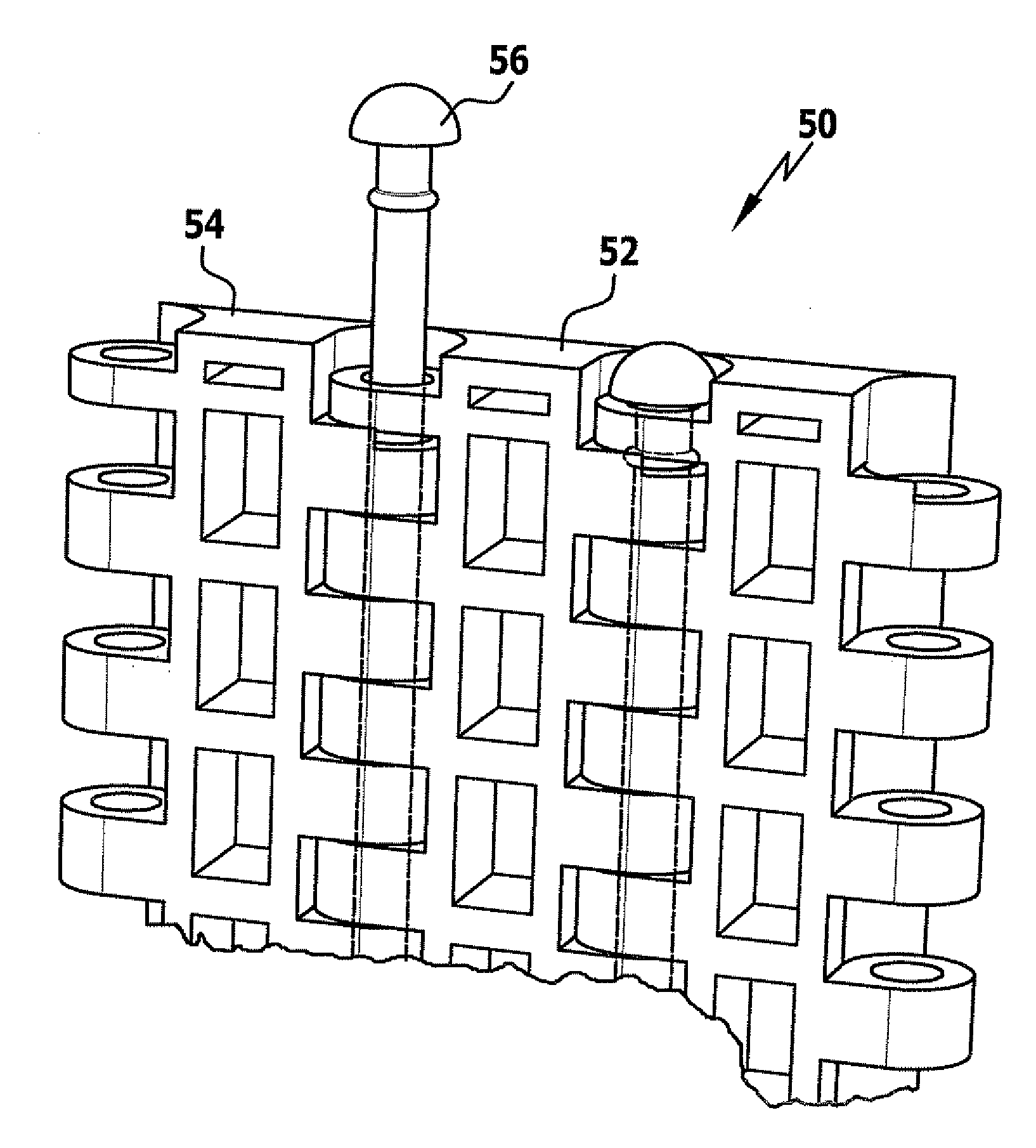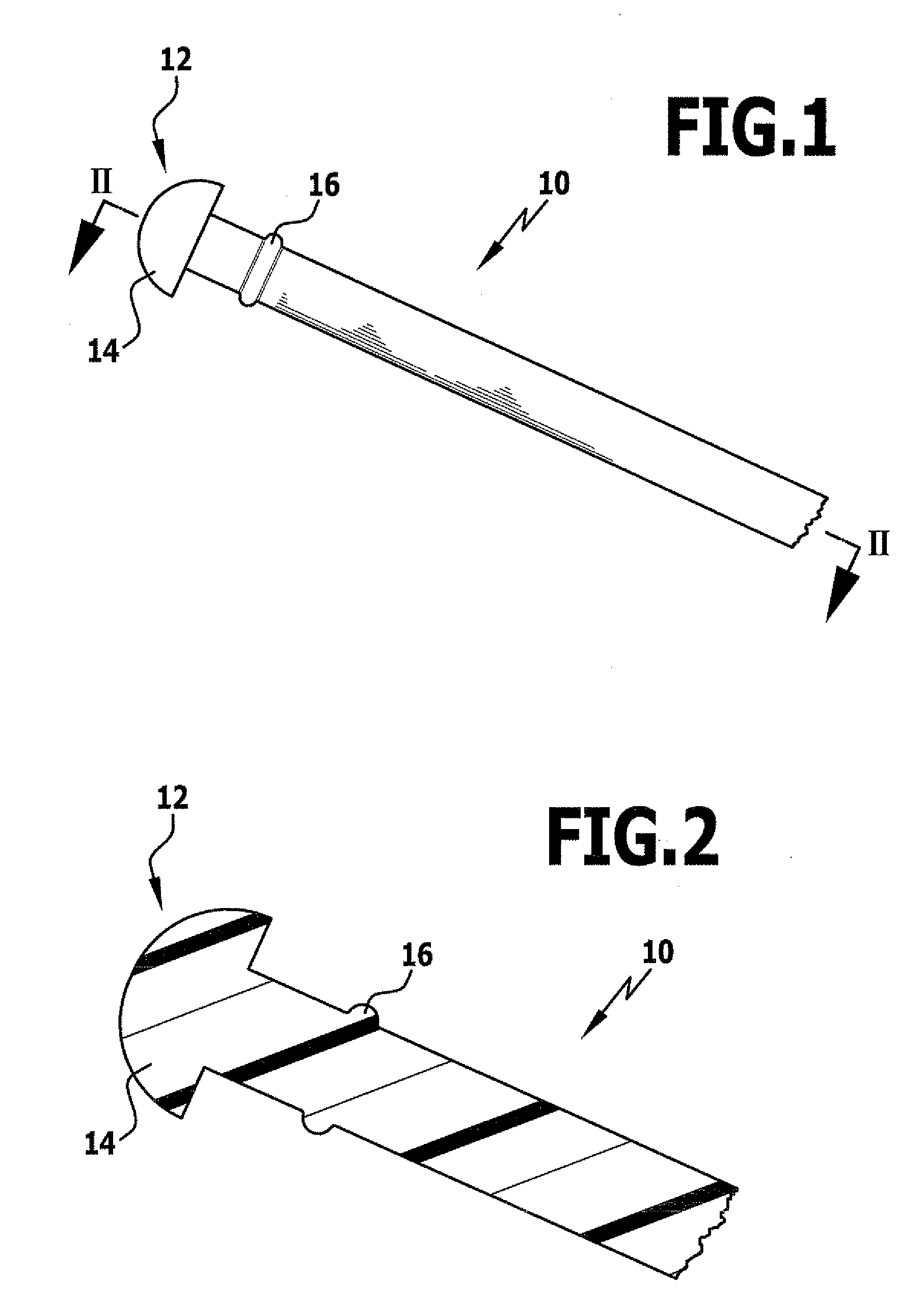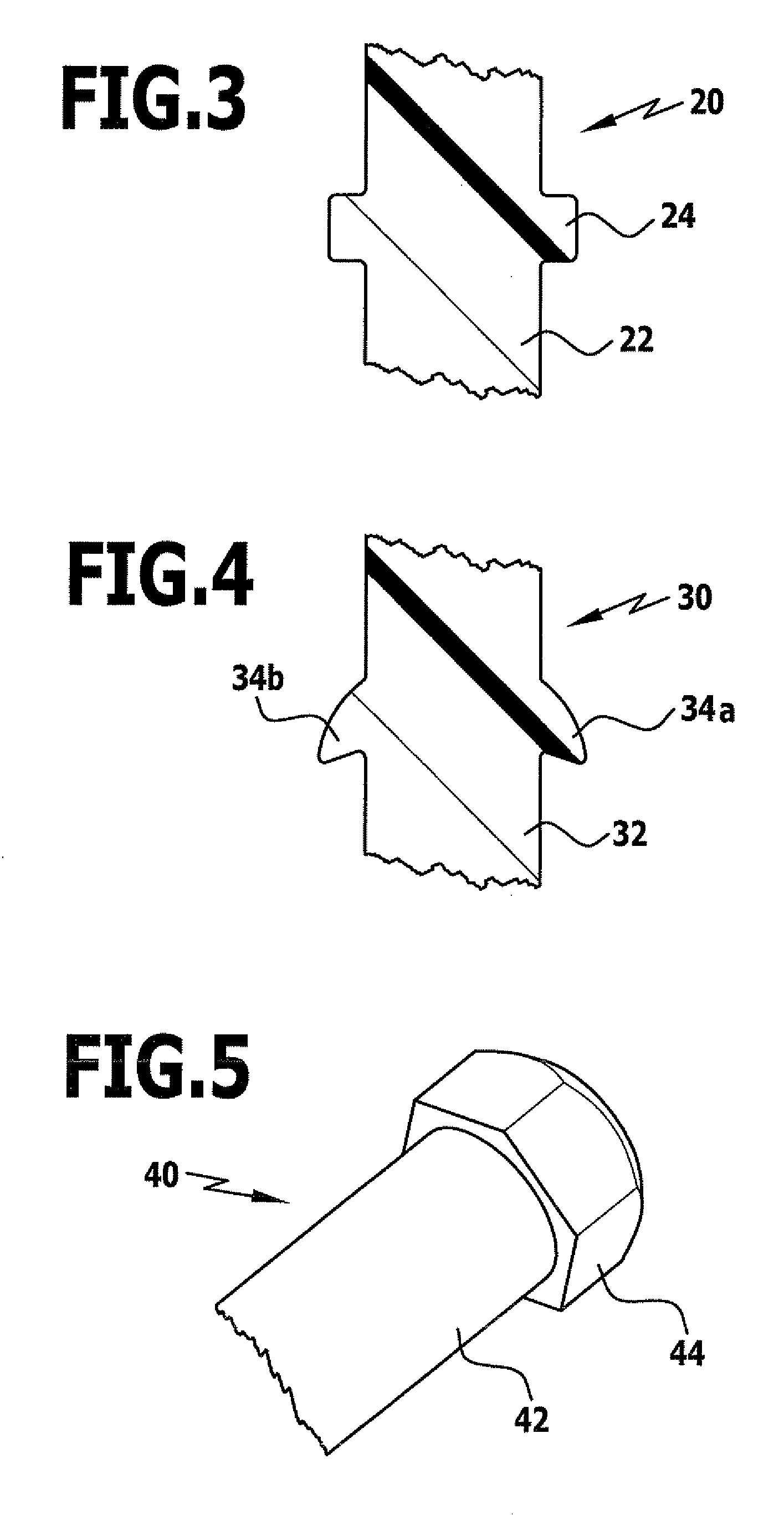Method for the manufacture of rod-shaped components
- Summary
- Abstract
- Description
- Claims
- Application Information
AI Technical Summary
Benefits of technology
Problems solved by technology
Method used
Image
Examples
Embodiment Construction
[0064]FIG. 1 shows a rod-shaped component according to the invention, generally designated by reference numeral 10, in the form of a joint pin with a substantially cylindrical shape. At one free end 12, the joint pin 10 has a spherical cap-shaped head 14, which was formed by reshaping a cylindrical blank in accordance with the method according to the invention. In this example, the diameter of the cylindrical blank is 3 mm.
[0065]A ring collar 16 serving to lock the joint pin upon insertion into an associated joint connection (cf. FIG. 6) is formed at a spacing from the head 14 on the joint pin 10.
[0066]In the present case, the joint pin is made from a polyamide 6.6 material, which has a melting temperature of approximately 260° C.±5° C. The glass transition point in this material usually lies at approximately 70° C. to 50° C., depending on the moisture content of the material used.
[0067]The ideal working temperature here for the reshaping process lies above 110° C., in particular, i...
PUM
| Property | Measurement | Unit |
|---|---|---|
| Time | aaaaa | aaaaa |
| Electric charge | aaaaa | aaaaa |
| Electric charge | aaaaa | aaaaa |
Abstract
Description
Claims
Application Information
 Login to View More
Login to View More - R&D
- Intellectual Property
- Life Sciences
- Materials
- Tech Scout
- Unparalleled Data Quality
- Higher Quality Content
- 60% Fewer Hallucinations
Browse by: Latest US Patents, China's latest patents, Technical Efficacy Thesaurus, Application Domain, Technology Topic, Popular Technical Reports.
© 2025 PatSnap. All rights reserved.Legal|Privacy policy|Modern Slavery Act Transparency Statement|Sitemap|About US| Contact US: help@patsnap.com



